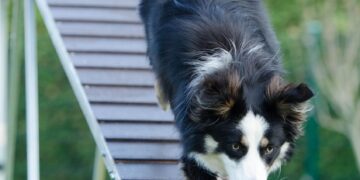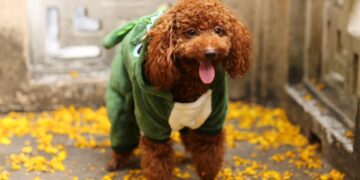Discover the Best Apartment Dogs That Can Be Left Alone: Perfect Pets for Busy Lifestyles
If you’re someone with a bustling lifestyle but still dream of having a dog, it’s essential to find a breed that fits well into your busy schedule and living arrangement. Living in an apartment doesn’t mean you must forego the joy of having a canine companion. In fact, there are several breeds known for their adaptability to indoor living and ability to spend time alone comfortably. In this article, we’ll explore some of the best dog breeds for apartment dwellers with busy lifestyles, providing insights into their temperament, needs, and why they make ideal pets for your situation.
Understanding the Basics: Dogs in Apartments
Before diving into the specific breeds, it’s important to understand what makes a dog suitable for apartment living and spending time alone. Traits such as a calm demeanor, low to moderate energy levels, and minimal barking are crucial. Additionally, size doesn’t always determine whether a dog will be happy in a smaller space; rather, it’s about the dog’s overall adaptability and temperament.
Top Dog Breeds for Busy Apartment Dwellers
1. French Bulldog
The French Bulldog is a small, muscular dog with a smooth coat, compact build, and distinctive “bat ears.” Renowned for their even temper and affectionate nature, French Bulldogs are comfortable in small spaces and require minimal exercise. They do well alone for reasonable periods, making them perfect for an apartment setting and a busy owner.
2. Basenji
Known as the “barkless dog,” the Basenji is an independent breed that rarely barks but is known for its curious and alert nature. This breed is ideal for apartments due to its modest size and unique characteristic of being relatively quiet. They are energetic but can be catered to with regular, interactive toys that keep them engaged while you’re away.
3. Cavalier King Charles Spaniel
This breed might be small in size but they have a vast heart with affection and friendliness for their families. The Cavalier King Charles Spaniel adapts well to indoor living and can handle alone time, provided they get ample cuddles and some daily exercise with their owner. This breed’s loving disposition makes them a joy in any small space.
4. Greyhound
Contrary to popular belief, Greyhounds are not always the high-energy sprinters people assume them to be. These dogs are surprisingly good for apartments as they enjoy lounging around after a quick sprint. Known for their gentle and quiet nature, Greyhounds can be left alone for a few hours and will likely spend most of it sleeping.
5. Bichon Frise
A small breed known for its cheerful attitude, the Bichon Frise is a great companion for apartment life. They are relatively easy to train and do well with alone time if their emotional and physical activity needs are met. This breed requires regular grooming, which can be an excellent bonding activity for owner and pet.
Care Tips for Leaving Dogs Alone
Even the most independent breeds will need some preparation and care when left alone. Here are some tips to ensure your dog is safe and happy while you’re out:
- Create a Safe Space: Set up a comfortable area with a bed, fresh water, and safe toys. This acts as their sanctuary where they can feel secure and relaxed in your absence.
- Keep Them Entertained: Provide plenty of toys that stimulate their mind and deter them from destructive behaviors. Treat-dispensing toys are great for keeping them busy.
- Exercise Before Leaving: A well-exercised dog is more likely to rest while you’re away. A good walk or a play session before you leave can make a big difference.
- Consider Doggy Daycare or a Dog Walker: If you’re away for long hours regularly, these services can help break up the day for your dog and keep them interacting with others, which is vital for their social skills.
Conclusion
Choosing the right breed and providing a supportive environment can make having a dog in an apartment a delightful and fulfilling experience. The breeds mentioned here are known for their ability to adapt to smaller living spaces and their tolerance for being alone. By understanding their needs and ensuring they are met, you’ll create a harmonious living situation for both you and your canine companion. Remember, a happy dog means a happy home!














































